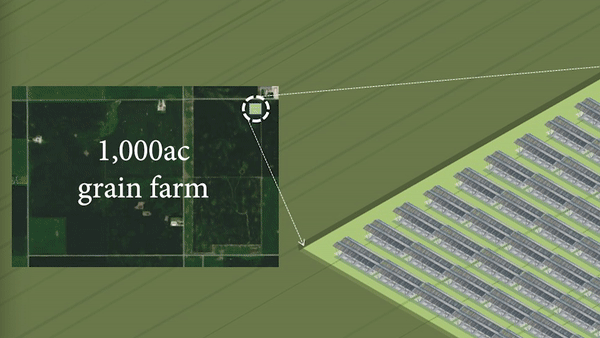
Double Your Profits with On-Farm Solar
As a row crop farmer, SunFarmor addresses the challenges you face, especially high energy, fuel, and fertilizer costs. We use solar so you can double your profits by becoming a “price-maker” instead of a “price-taker.” We use solar to do three things:

Increase Farm Profits
As a row crop farmer, you can double dip by using solar to stabilize your input costs for 30 years while earning annual price premiums when you use solar to produce clean fuel and nitrogen fertilizer. A solar farm on 3.5 acres with a containerized ammonia plant provides all the fuel & fertilizer to operate a 1,000-acre conventional grain farm or a 2,000-acre regen farm. With IRA incentives, you’ll turn cash flow positive after the first year and earn ROIs between 18% and 95% (some 50% on solar alone). Most important, you’ll stabilize 1/3 of your non-land OPEXs for 30 years.

Power Clean Fuel & Fertilizer Plants
As a row crop farmer, instead of storing all the solar energy in batteries, you can stockpile it as ammonia to power your clean-fueled tractors, semis, or grain dryers.
A field of SunFarmor solar generators will power containerized ammonia plants so you can make carbon-free fuel and fertilizer on-farm. Using these clean inputs will unlock price premiums for your carbon-reduced crops year after year.

Keep Profits Local
Instead of buying inputs from corporations that produce them far away, farmers will generate their own clean, local inputs while creating jobs for local welders, electricians, and laborers. Every 4MW of SunFarmor generators creates 43 job years for the economy. Additionally, farmers profiting from price premiums will spend money in the local economy year after year. Keeping solar benefits local keeps the dollars local.
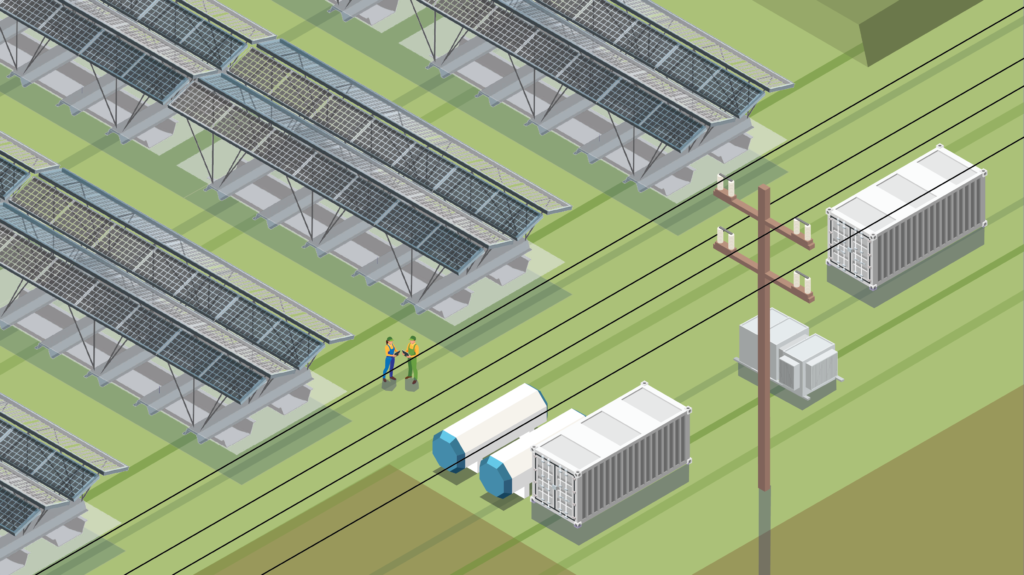
How to Unlock the Profits
As a row crop farmer, the Inflation Reduction Act is hugely beneficial to you. With tax credits, it can fund up to 50% of the cost of solar ($2/W), the ammonia plant, and the grid interconnection. You can use USDA REAP (Renewable Energy for American Program) grants and loans to fund the balance of the cost of SunFarmor generators. But where do the profits come from?
When you use solar to generate green ammonia and then transition your fleet and grain dryers to run on it, you’ll maximize the price premiums you’ll earn from companies committed to reducing their Scope 3 GHG emissions. Those companies can only reduce their Scope 3 emissions by buying from farmers like you who’ve lowered their carbon footprint.
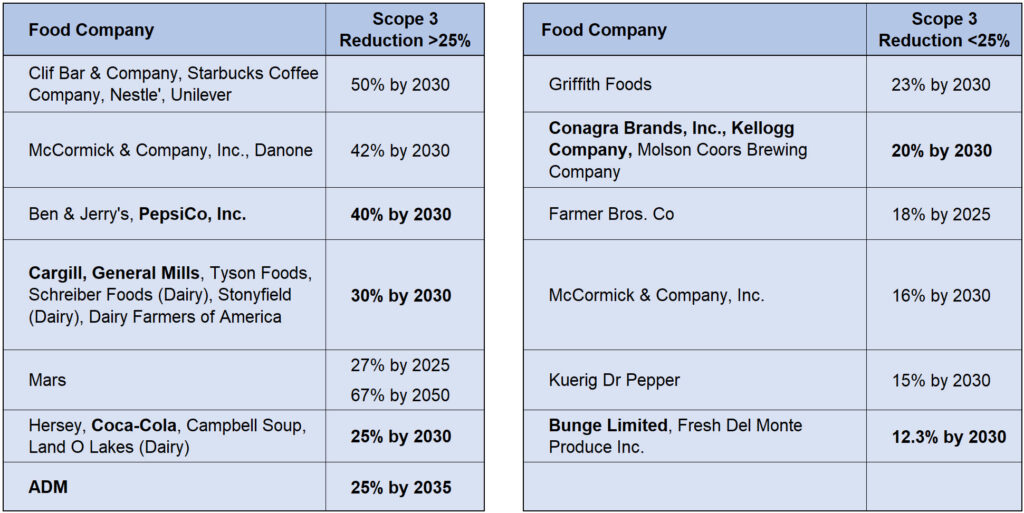
An Unprecedented Opportunity for Farmers
There’s no supply to meet committed demand for carbon-reduced commodities. For example, Cargill must purchase between the EQUIVALENT of 123M and 227M bushels of carbon-free corn every year starting in 2030. ADM must purchase more than 1B bushels annually by 2035. And the demand will only increase.
There is NO appreciable supply today. If you extrapolate the premium POET paid for carbon-reduced corn in 2020, you will earn an EXTRA $200 to $250 per acre without relying on the Wild West of carbon sequestration markets. Ethanol 45Z provisions in the IRA will earn you similar premiums. Buyers won’t need separate bins like organic – only a chain of custody. The bottom line is that every acre you farm earns more every year. So there’s an alternative to buying more farmland to increase your profits. You can keep your same farm footprint and grow profits by reducing its carbon footprint.
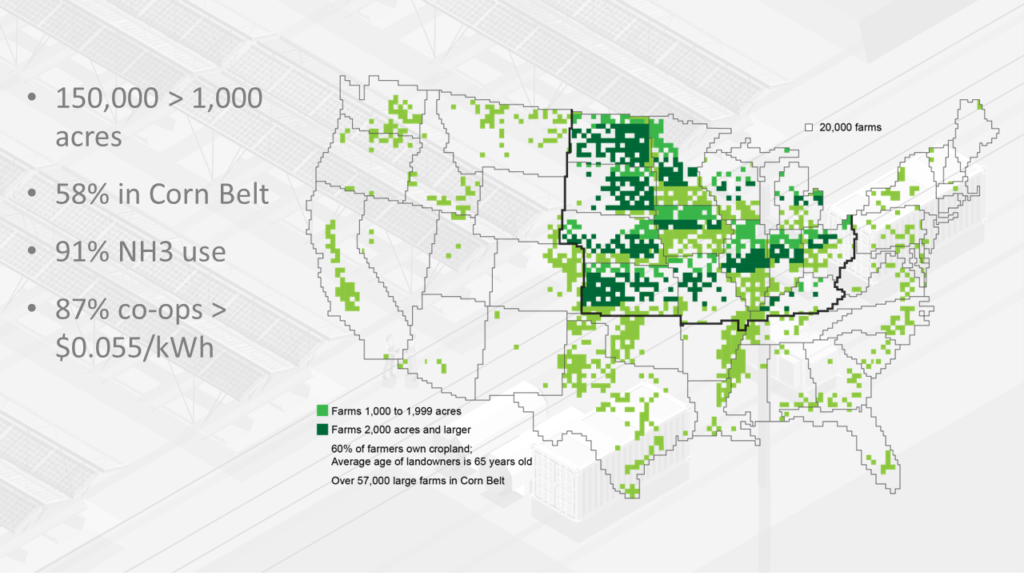
Huge Opportunities in the Corn Belt
Over 58% of America’s large farms (over 1,000 acres) reside in the Corn Belt, where farmers use over 91% of our country’s anhydrous ammonia as nitrogen fertilizer. Eighty-seven percent of the Rural Electric Cooperatives serving the farms pay over 5-1/2 cents wholesale per kilowatt hour for their electricity. But the real cost of electricity to a farmer is the cost of electricity delivered, which is substantially higher. If you’re a farmer in the Corn Belt, you can produce electricity with SunFarmor generators cheaper than your Rural Electrical Co-op pays. What you don’t consume, you can sell back to the grid for a profit.
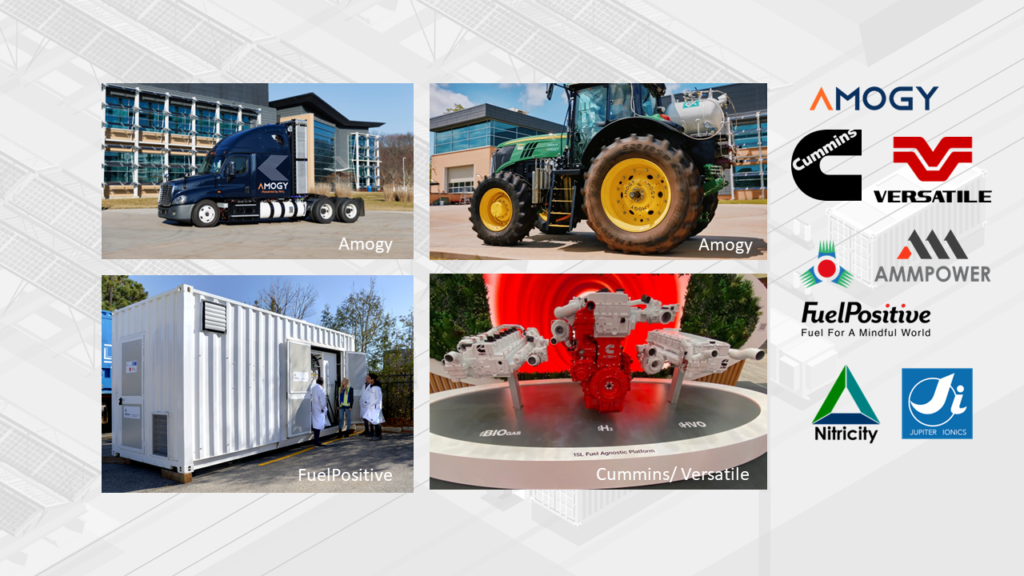
Making Green Ammonia Work for You
Puzzle pieces are emerging rapidly. Amogy demonstrated their Class 8 semi in winter and converted a Deere tractor last year. Both machines run on ammonia, cracked to power an onboard fuel cell.
Last year, Cummins announced that the engines that power the Deere 9 series would become Fuel Agnostic, available to run on various clean fuels. Versatile in Canada adopted this for their large tractors, too.
This year, FuelPositive is testing its first containerized ammonia plant on a farm in Manitoba. Ammpower is taking orders, too. There are companies on every continent working so you can produce green ammonia at a distribution scale on your farm.
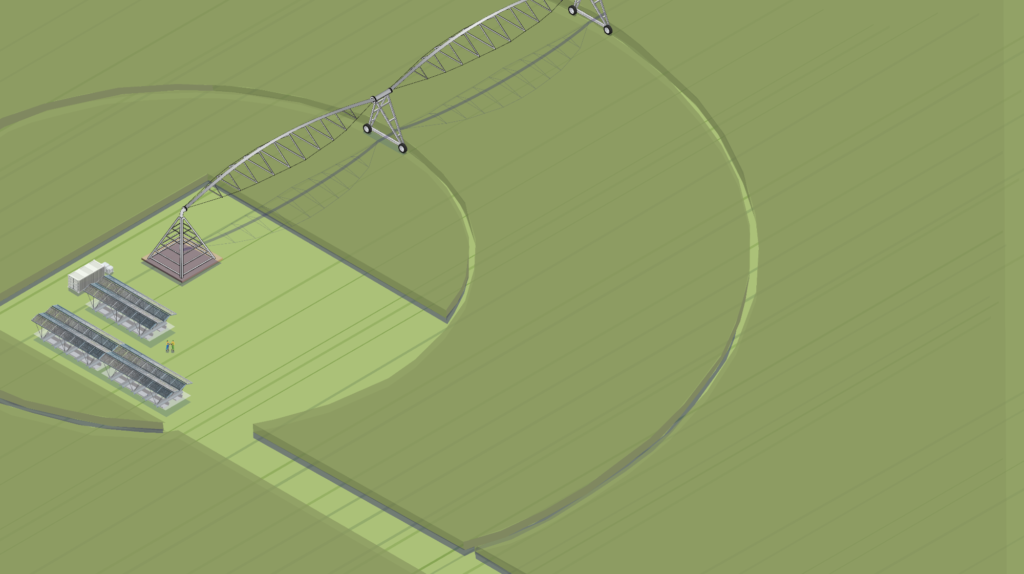
Irrigating on Your Terms for Profit
Rural utilities dictate the timing of most irrigation because they heavily penalize you for irrigating during peak energy usage. Many utilities charge you an annual fee – based on your pump horsepower – for letting you irrigate. You can reclaim your independence when you make electricity with SunFarmor generators and store some of it in batteries to extend your operational day. You can irrigate when necessary – not when utilities make it cheap enough.
If you’re transitioning from diesel to electricity, you will dramatically lower the carbon intensity of your crops, maximizing the market price premiums you’ll earn. You can also stretch those savings if you run your pump with a variable frequency drive since it saves energy.
If you farm in the Corn Belt, irrigation is a six-month affair. In the offseason, you can sell electricity back to your utilities for a profit, especially when you allow your utility to dispatch your battery storage to lower demand costs for fellow members.